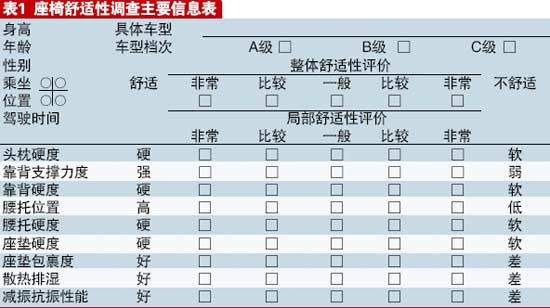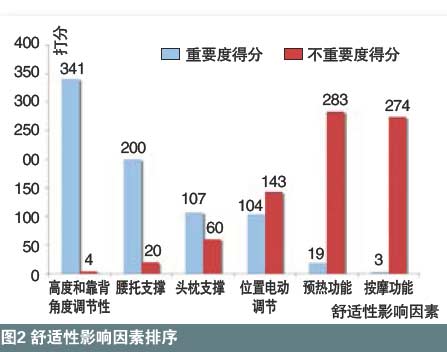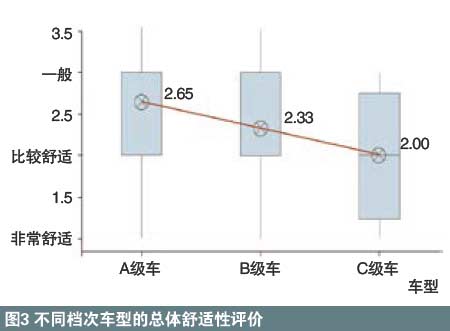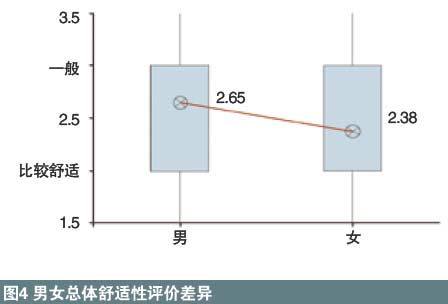Analysis of the Comfort of Car Seats

With the increasing popularity of automobile consumption, the comfort of car seats has received more and more attention.
Seat comfort mainly includes static comfort, dynamic comfort (also called vibration comfort) and operation comfort. Static comfort refers to the comfortable characteristics of the seat provided to the human body in a static state, mainly related to the seat size parameters, materials, adjustment characteristics, etc.; dynamic comfort means that the car will pass through the seat skeleton and the seat cushion during driving. The comfort characteristics of the vibration imparted to the human body; the operating comfort mainly refers to the comfort characteristics of the driver during driving. The research on the comfort of automobile seats mainly focuses on comfort ergonomics research and other fields. The existing market research focuses on the quality of seats, overall comfort, comparison between different seat brands, and more in-depth investigation and analysis. No report.
The car seat is mainly composed of a seat cushion, a backrest, a headrest and an adjustment device. The overall comfort of the seat depends on the local comfort feeling of these components and the overall heat dissipation, moisture absorption and vibration performance of the seat. Aiming at these factors, this paper designed a more comprehensive questionnaire, interviewed and collected 105 valid questionnaires. Through the statistical analysis of the survey data, some new comfort evaluation rules were obtained, which provided improvements for the comfort design of car seats. direction.
data collection
The study begins with the design of the seat comfort questionnaire. The questionnaire mainly includes user information, model information, driving habits, local comfort and overall comfort evaluation. It contains 25 questions, and its main information is summarized in Table 1. in.

The surveyed persons were aged between 20 and 55 years old and their height was between 5% and 95% of the human body size in China. They were in a normal distribution. All respondents had more than one year of driving experience. The surveyed seats were from high-end vehicles and mid-range vehicles. And three models of low-end cars. A total of 120 questionnaires were collected, including 105 valid questionnaires.
Using the form of a fifth-order Likert scale, the five options for comfort feeling are assigned, very comfortable with a value of 1 and very uncomfortable with a value of 5, with a feeling of 3 in the middle. The five evaluation levels of comfort can be converted into statistical analysis of specific values ​​for quantification.
Analysis of factors affecting comfort
In the survey, we asked respondents to rank factors affecting comfort and confirm factors that have a greater impact on the comfort of the car seat, as the focus of comfort improvement. At the same time, identify factors that consumers believe are less important, reduce unnecessary configuration, and reduce seat production costs.
The results of the survey (see Figure 1) show that 61.5% of respondents believe that seat adjustability is the most important factor affecting comfort, and 24% of respondents believe that lumbar support is the most important factor. In addition, 10% and 3.8% of users respectively have electric adjustment and headrest as the most important influencing factors. The first choice made by the respondent is assigned 5 points, the second choice is assigned 3 points, the third choice is assigned 1 point, and the weighted total points of the influence factors are given in FIG.
It can be seen that the most important factor affecting comfort is the adjustability of the seat and the support of the lumbar support, and massage function and warm-up function are less important for comfort. Therefore, automotive seat comfort design should focus on adjustment performance and lumbar support performance.
Influence of other factors on the evaluation of comfort
The survey involved 20 models of major models including Audi, Toyota, Mercedes-Benz, Mitsubishi, Buick, Honda, Volkswagen, Mazda, Ford, Zhonghua, Hyundai, Nissan, and Signature, including 8 A-Class low-grade cars, and Class B 7 mid-range cars, 5 C-class premium cars.

As shown in Figure 3, the abscissas are three models. The ordinate shows the evaluation of the seat comfort. The results of analysis of variance (ANOVA) indicate that there is a significant difference in the seat comfort of different models (p=0.030). High and comfortable.

Figure 4 shows the differences in comfort sensation between men and women, and the overall comfort level of women is higher (p=0.047). The 95% confidence interval for the mean difference is (0.005, 0.532). At the same time, the analysis of local comfort differences found that men were more satisfied with the performance of vibration damping than women (mean value 2.37 vs. 2.76, P=0.042).
Figure 5 shows that the higher the age of the occupants, the higher the degree of discomfort, and the difference between the ages of 45 and under 45 is significant (p=0.003). Figure 6 shows the results of local comfort. Older people felt heavier lumbar stiffness (p=0.044) and felt that the soft lumbar support was more comfortable.
The average driving time of the surveyed subjects was distributed within 5 hours. Figure 7 shows that as the driving time increases, the degree of discomfort increases, and the analysis of variance shows that this difference is not significant (p=0.790). However, analysis of local comfort found that after a long period of driving, the survey subjects felt that the cushion (p=0.043) and lumbar support (p=0.041) were too soft and that the hardness needed to be adapted to the comfort requirements of long driving.
Comparing the degree of comfort of the driver and passenger, the co-pilot and the rear seat, although the driver's uncomfortable rating average (2.59) is higher than that of the copilot (2.46) and the rear seat (2.50), the result of the analysis of variance shows a difference. The difference in comfort between seating locations was not significant (p=0.703).
in conclusion
Through a large number of investigations and analysis, this article reveals the various factors affecting the seat comfort. The main conclusions are as follows:
1. From the point of view of the function and structure of the seat, the main factors influencing the comfort are seat adjustability and lumbar support, and massage function and preheat function have little effect on comfort.
2. The survey shows that: The higher the model level, the higher the user's comfort rating.
3. Women's overall comfort satisfaction is higher, and men's satisfaction with vibration damping performance is higher than that of women.
4. Older people feel that the lumbar support stiffness is too high, and that the soft lumbar support is more comfortable. However, after a long drive, the user thinks that the seat cushion and the lumbar support stiffness are more comfortable. It can be seen that the seat comfort rating does not have a uniform standard when considering different user groups and use conditions.
//PE Recycling Machine,PP Recycling Machine,PE Washing Line
Fenghua Jade Motor Co., Ltd. , http://www.plasticgranulator-supplier.com
